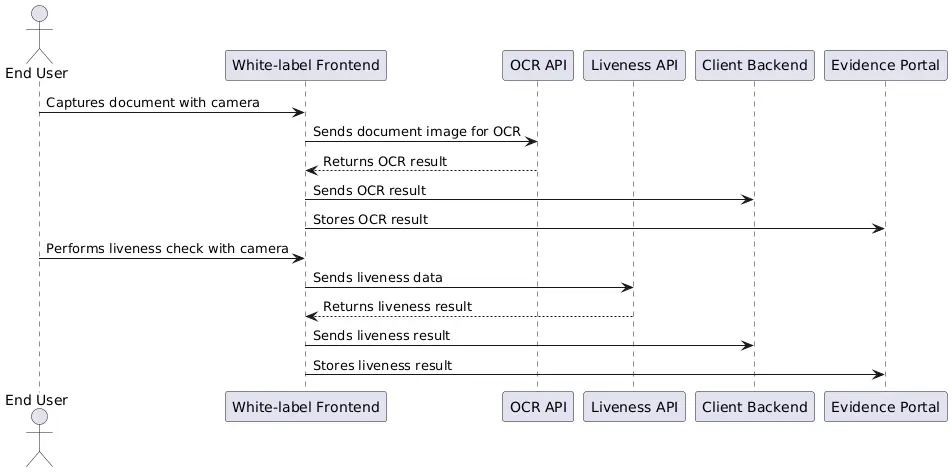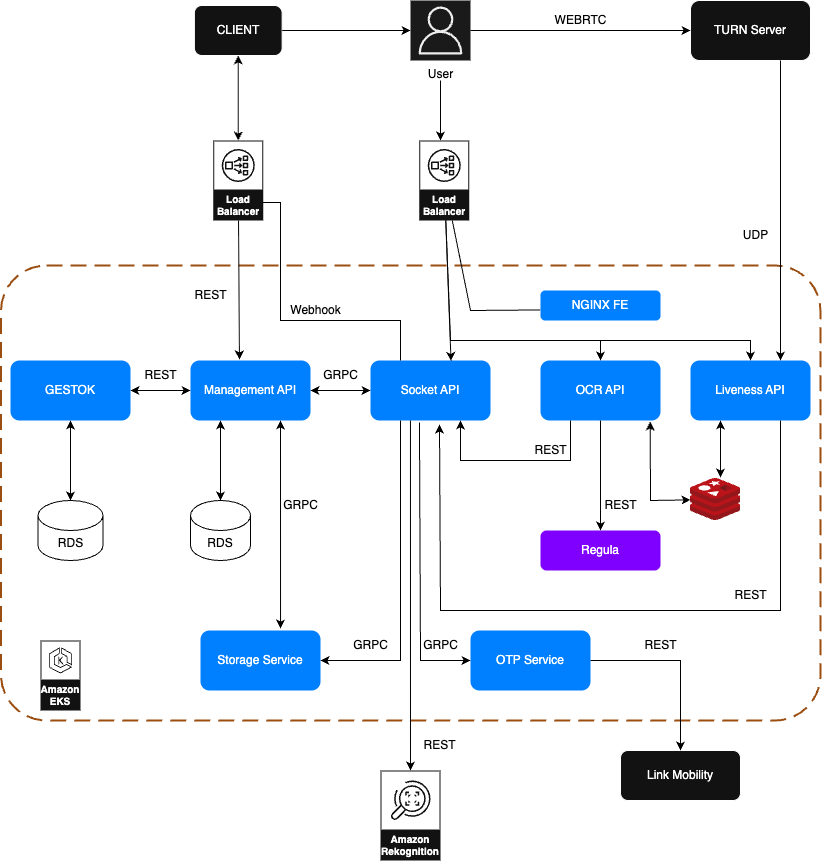Architecture
Overview
The onboarding solution is composed of multiple interconnected components designed to handle OCR, liveness checks, and evidence management in a secure and efficient manner. This section provides an overview of the architecture and how each part interacts to deliver the complete solution.
Sequence Diagram
Below is a sequence diagram illustrating the interaction between the user, white-label frontend, APIs, the client's backend, and the Evidence Portal.

Description of the Flow:
-
OCR Process:
- The user interacts with the white-label frontend to capture a document using their camera.
- The captured document image is sent to the OCR API for processing.
- The OCR API processes the image and returns the result to the frontend.
- The frontend forwards the result to:
- The client's backend for further processing or storage.
- The Evidence Portal for record-keeping.
-
Liveness Check Process:
- The user performs a liveness check using their camera via the white-label frontend.
- The liveness data is sent to the Liveness API for validation.
- The Liveness API processes the request and returns the result to the frontend.
- The frontend sends the result to:
- The client's backend for processing or notification.
- The Evidence Portal for secure storage and auditing.
Key Components
- Digital Onboarding Web: The user-facing interface that handles OCR and liveness interactions.
- OCR API: Processes document images to extract text and relevant data.
- Liveness API: Validates user presence and liveness through video or image data.
- Client Backend: The client's system that receives webhook notifications and processes results.
- Evidence Portal: Stores all processed data securely for compliance and auditing purposes.
Infrastructure Architecture
The following diagram illustrates the high-level infrastructure architecture of the digital onboarding solution, showing how different services and components are deployed and interconnected across the cloud infrastructure.

